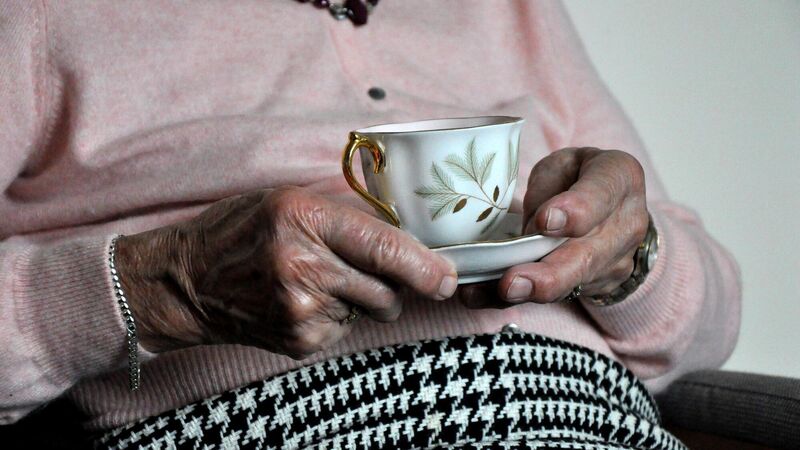With an ageing population - why home care is so important

CSO projections indicate that by 2030, there will be over one million people aged 65 and above in Ireland.
IRELAND has an ageing population. Life expectancy in Ireland has risen by two years for women and 2.5 years for men since 2008, with average life expectancy for women at 84.1 years and men to 80.5 years (2018), meaning Ireland is above the European average. CSO projections indicate that by 2030, there will be over one million people aged 65 and above in Ireland. While this is very welcome news, it brings in its wake other challenges in terms of planning, allocation of resources etc, to meet the increased demand for both home based and nursing home care.
The preferred option of most older people is to stay at home for as long as possible, which is also reflected in government policy.
The Programme for Government: Our Shared Future aims to “introduce a statutory scheme to support people to live in their own homes, which will provide equitable access to high-quality, regulated home care”.
Government expenditure on nursing home care is estimated to be over twice that of what is spent on home based care per person. Therefore, as well as being the preferred option of the majority of older people, home support is also considerably more cost effective. A further objective of government policy is to keep older people out of acute hospitals, where possible.

The Present System
Much of home care is provided on a voluntary basis, by friends or family and is for the most part unpaid. The Health Services Executive (HSE) also currently provides home care support through a number of different schemes: namely the home help service, home care packages (HCPs) which provide medium to high level of support, and intensive home care packages (IHCPs), for patients with very high level of support needs. The cost of the IHIP with other supports) is still substantially lower than that of a bed in a nursing home.
The HSE also employs carers, as well as contracting out their additional care staffing requirements to private companies. There is also private home care, which may be provided by agencies or individuals. Voluntary or voluntary organisations also provide care with HSE funding. Around 20% of carers are not attached to an agency. It is estimated that about 40% of home care is provided by the private sector, 50% by the HSE and the remainder by the voluntary sector.
In summary, the organisation and provision of homecare in Ireland is complex, involving a network of homecare staff, informal carers, provider organisations, the HSE and other associated health professionals such as physiotherapists, occupational therapists etc.
Changes
There has also been a lack of consistency in standards across the home care sector. For this reason, I, along with Senator Emer Higgins sponsored The Health (Amendment) Licensing of Professional Home Support Bill 2020 (the Bill). When enacted, it will provide for the regulation of both public and private home care providers.
The Bill introduces a regulatory framework, as well as setting legal standards and training requirements for professional home carers.
As demand for home care is set to grow substantially over the next number of years, it is essential that we put the appropriate systems for home care in place.
There is a statutory right to nursing home care in Ireland. We have the nursing home support scheme (NHSS) otherwise known as the Fair Deal Scheme. 80% of the applicant’s income, together with 7.5% of the value of their property is assessed as their contribution. This 7.5% of the property per year is only taken into account for three years (i.e. up to a maximum of 22.5%). The remainder of the cost is paid by the state under the Fair Deal Scheme. However, Ireland lacks an equivalent statutory scheme for the home care sector.
In light of this, the Department of Health, in addition to increasing homecare hours, is currently in the process of developing a statutory scheme with regard to the financing and regulation of home support services. The mechanics of how this will be funded is currently being worked out by the Department of Health and the tax, pensions and welfare division of the ESRI. There are different approaches to how homecare is paid for across the EU.
Under the proposed scheme, a new system of care bands will be introduced to ensure that an individual is in a care band which adequately assesses and addresses their specific care needs.
Government policy aims to move towards a more patient centred model of care, which is also a central theme of Slaintecare. It is hoped to ultimately integrate the home care system with the nursing home care system, so that an individual can transition from home care to nursing home care much more easily, if the need arises.
The goal in all of this is to streamline the process for the individual and their families and to ensure continuity of care. Government policy also aims to relieve pressure on hospitals, and also nursing homes, so that they can be kept for those most in need of their services.
Staff recruitment and retention do, however, remain an ongoing problem not only in the homecare sector, but across the health system as a whole.







 App?
App?




